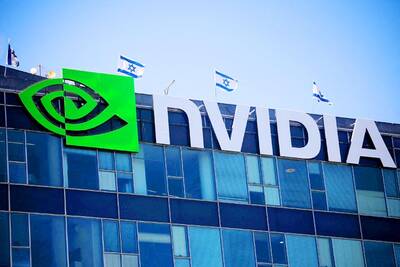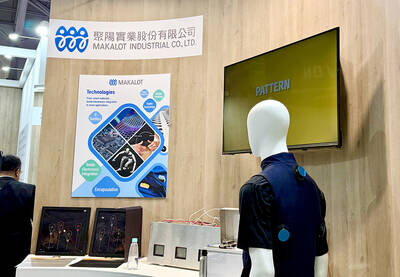Asustek Computer Inc (華碩) hopes the launch of its next-generation smartphone — the ZenFone 3 — in June will help boost growth momentum in the second half of this year, a company official said on Friday.
“We expect to introduce the new flagship smartphone at the end of June and start mass production in July,” Asustek chief financial officer Nick Wu (吳長榮) said in a telephone interview.
Together with the launches of other handsets in the second half of the year, the company aims to sell 25 million smartphones this year, an increase of 25 percent from last year’s 20 million units.
The company in February cut its annual shipment target for smartphones from 30 million units to 25 million units.
The smartphone business for the first half of the year is likely to remain flattish or increase slightly from the 8 million units sold over the same period last year, as the product cycle of the ZenFone 2 series gradually dissipates, the company said.
Analysts said the company would need to ship 17 million units between July and December to reach its annual target.
However, as the Zenfone series becomes more complete, it will serve as a stronger growth driver for Asustek, they said.
The company’s goal of a 25 percent annual increase in smartphone shipments is higher than the global average of 7 percent forecast by international research house Gartner Inc on March 31.
It also underlines chief executive officer Jerry Shen’s (沈振來) efforts to improve the firm’s smartphone marketing strategies.
Shen in February said that Asustek aims to focus on fast-growing emerging markets this year such as Indonesia, Malaysia, Vietnam, Thailand, the Philippines and India.
The firm also plans to introduce a limited number of higher-margin smartphones in the regions in a bid to have a deeper and closer relationship with consumers there, he said.
Shen said the company hopes to see its market share in Indonesia increase to 18 percent this year from 15 percent last year and from 2 percent to 5 percent in India.
Compared with the company’s aggressiveness in the smartphone business, Asustek is conservative about the outlook of its tablet segment, after seeing an annual decline of 37.23 percent in shipments last year amid softening demand.
In the first quarter of this year, the company only shipped 1 million tablets, down 33.33 percent from 1.5 million units a year ago, Wu said.
Wu said the company also plans to introduce new tablets in June and will continue improving its operation efficiency in the tablet segment in a bid to increase tablet shipments in the second half.
However, the persistent weak demand for tablets worldwide will weigh on Asustek’s tablet shipments this year, which are likely to remain flat from last year’s 5.9 million units, Wu said.

Shares in Taiwan closed at a new high yesterday, the first trading day of the new year, as contract chipmaker Taiwan Semiconductor Manufacturing Co (TSMC, 台積電) continued to break records amid an artificial intelligence (AI) boom, dealers said. The TAIEX closed up 386.21 points, or 1.33 percent, at 29,349.81, with turnover totaling NT$648.844 billion (US$20.65 billion). “Judging from a stronger Taiwan dollar against the US dollar, I think foreign institutional investors returned from the holidays and brought funds into the local market,” Concord Securities Co (康和證券) analyst Kerry Huang (黃志祺) said. “Foreign investors just rebuilt their positions with TSMC as their top target,

H200 CHIPS: A source said that Nvidia has asked the Taiwanese company to begin production of additional chips and work is expected to start in the second quarter Nvidia Corp is scrambling to meet demand for its H200 artificial intelligence (AI) chips from Chinese technology companies and has approached contract manufacturer Taiwan Semiconductor Manufacturing Co (TSMC, 台積電) to ramp up production, sources said. Chinese technology companies have placed orders for more than 2 million H200 chips for this year, while Nvidia holds just 700,000 units in stock, two of the people said. The exact additional volume Nvidia intends to order from TSMC remains unclear, they said. A third source said that Nvidia has asked TSMC to begin production of the additional chips and work is expected to start in the second

REVENUE PERFORMANCE: Cloud and network products, and electronic components saw strong increases, while smart consumer electronics and computing products fell Hon Hai Precision Industry Co (鴻海精密) yesterday posted 26.51 percent quarterly growth in revenue for last quarter to NT$2.6 trillion (US$82.44 billion), the strongest on record for the period and above expectations, but the company forecast a slight revenue dip this quarter due to seasonal factors. On an annual basis, revenue last quarter grew 22.07 percent, the company said. Analysts on average estimated about NT$2.4 trillion increase. Hon Hai, which assembles servers for Nvidia Corp and iPhones for Apple Inc, is expanding its capacity in the US, adding artificial intelligence (AI) server production in Wisconsin and Texas, where it operates established campuses. This

Garment maker Makalot Industrial Co (聚陽) yesterday reported lower-than-expected fourth-quarter revenue of NT$7.93 billion (US$251.44 million), down 9.48 percent from NT$8.76 billion a year earlier. On a quarterly basis, revenue fell 10.83 percent from NT$8.89 billion, company data showed. The figure was also lower than market expectations of NT$8.05 billion, according to data compiled by Yuanta Securities Investment and Consulting Co (元大投顧), which had projected NT$8.22 billion. Makalot’s revenue this quarter would likely increase by a mid-teens percentage as the industry is entering its high season, Yuanta said. Overall, Makalot’s revenue last year totaled NT$34.43 billion, down 3.08 percent from its record NT$35.52